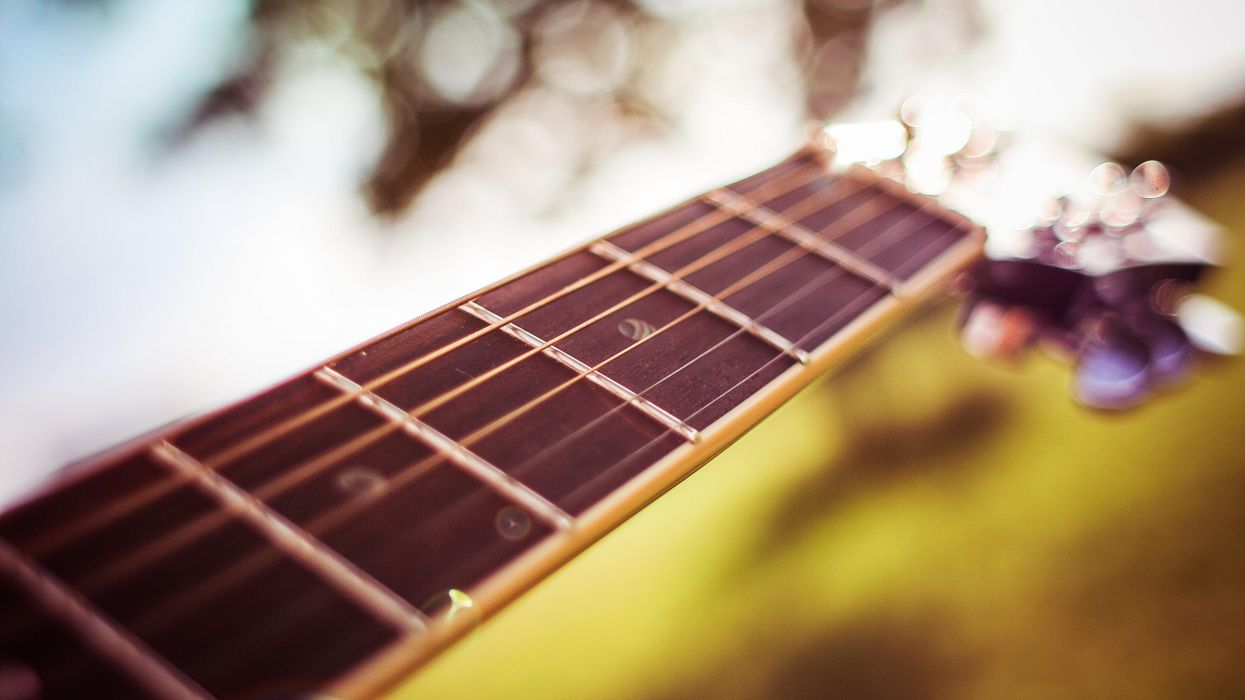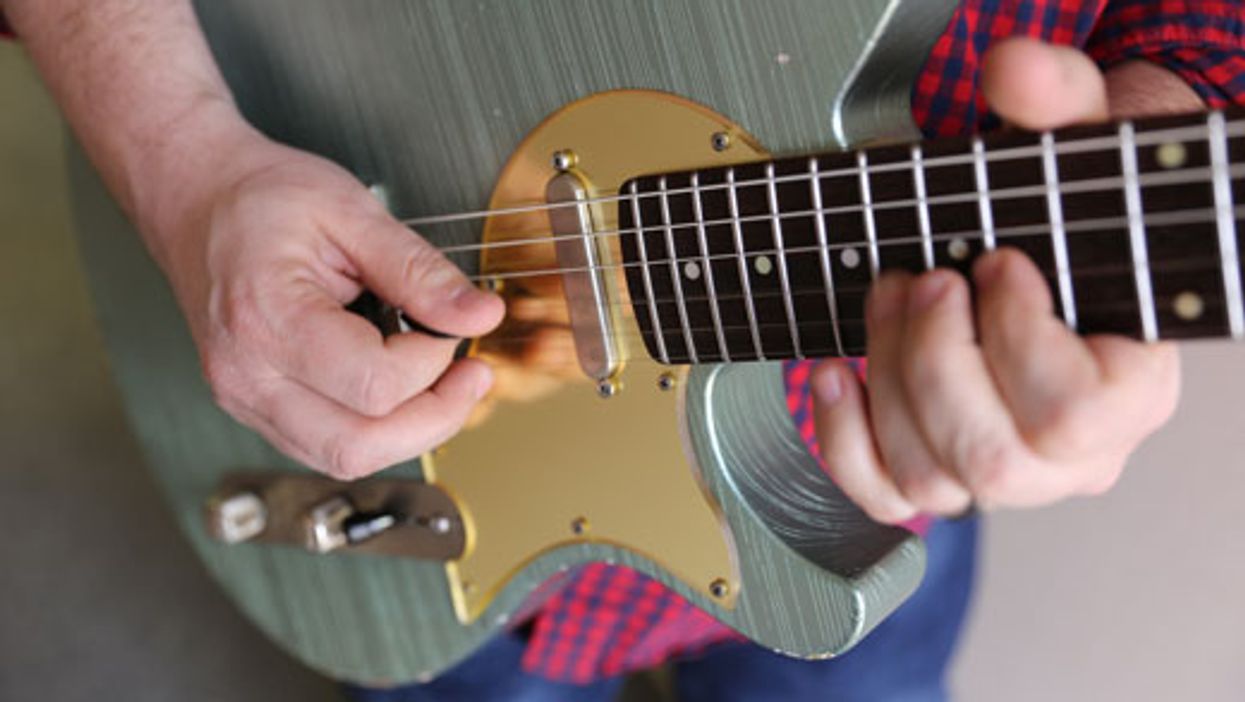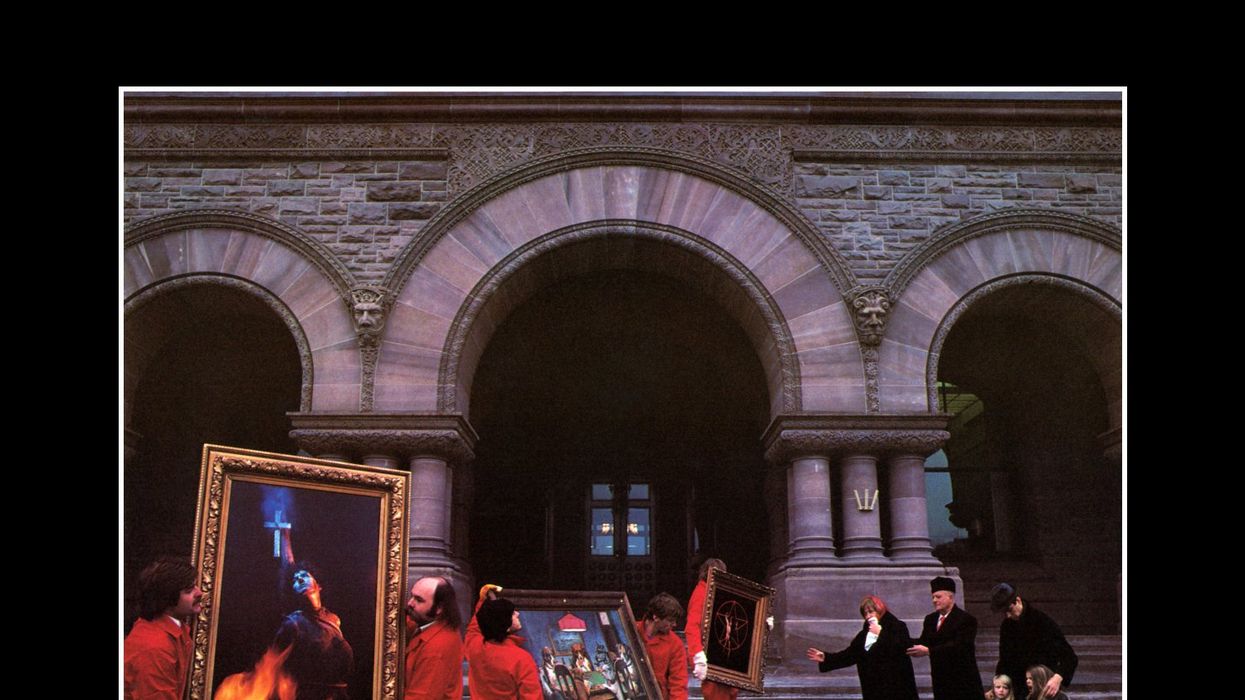I had a bit of a strange introduction to the Red Hot Chili Peppers. Back in the day, during my first week of school at New York University, I noticed a sign on the door of the student cafeteria indicating that a relatively unknown band called “Red Hot Chili Peppers” was playing a show across the hall that Saturday night. I remember thinking, “Well, that’s a silly name for a band. Those guys are never going anywhere.” Yeah. Good call.
Cut to winter 2002: I’ve been a professional music transcriber for about five years, and I find myself in the Chili Peppers’ NYC management office, transcribing an advance copy of their By the Way album, set to be released that summer. It was the band’s eighth album and fourth with guitarist John Frusciante. It was also my first deep dive into Frusciante’s playing, though it would not be my last.
Guitars Gotta Groove
One of the Chili Peppers’ breakthrough hits was their cover of Stevie Wonder’s “Higher Ground” from 1989’s Mother’s Milk. This performance is a barnburner:
Frusciante’s aggressive strumming contributes mightily to the bedlam, combining bluesy double-stops and percussive muted strums. With Flea’s bass and Chad Smith’s drums, it’s a full-frontal punk/funk assault, and Ex. 1 is inspired by Frusciante’s playing on this classic. A key to staying in the groove is to keep your picking hand moving in a triplet rhythm, even if it’s not actually sounding any notes, as illustrated by the indicated strum pattern.
Another of Frusciante’s early records with RHCP, 1991’s Blood Sugar Sex Magik, has Frusciante fueling songs with his funk-inspired strumming style, melding punctuated funky single notes with, again, a lot of percussive, muted strums. Ex. 2 is reminiscent of Frusciante’s verse part in “Give It Away.” Note that even when just a single note is indicated, you should also include some surrounding muted strings, in order keep the percussiveness flowing. Focus on muting all six strings with your fretting-hand fingers and thumb, applying pressure only when an actual note is indicated. And keep that picking hand moving!
One of Frusciante’s earliest influences was Jimi Hendrix, and in “Suck My Kiss,” Frusciante fuses funk guitar with a rock-style riff that has shades of Hendrix’s “Fire.” Ex. 3 is based on this Chili Peppers’ classic and illustrates just how impactful the use of space can be. No extra muted strings here, just play as written.
Chordal Magic
Let’s give our picking hands a break and detour into Frusciante’s use of chord voicings. Among his many influences were guitarists in 1980s punk-rock bands. One such guitarist is John McGeoch from Siouxsie and the Banshees, and you can just imagine a young Frusciante being inspired by McGeoch’s playing in a song like “Spellbound.”
In a similar vein, Ex. 4 is based on Frusciante’s playing in songs like Blood Sugar Sex Magik’s “Under the Bridge.” Frusciante doesn’t merely arpeggiate chords. He goes deeper, and creates hummable melodies. In doing so, his guitar parts often act as additional hooks throughout the Chili Peppers’ songs.
Some of Frusciante’s most memorable, not to mention fun-to-play, guitar parts are a mashup of techniques. Take, for example, his intro to “Snow (Hey Oh)” from the 2006 album Stadium Arcadium. He deftly arpeggiates chords, though here, he stops to add melodic flourishes, and Ex. 5 is based on this same approach.
Let’s Make Some Noise
As I alluded to earlier, I would have yet another opportunity to get into the nitty-gritty of Frusciante’s playing. Just this past year, I transcribed much of the Chili Peppers’ two 2022 releases, Unlimited Love and Return of the Dream Canteen, marking Frusciante’s return to the band after departing in 2009. Let’s explore…
Sometimes all a song needs is noisy weirdness. In the choruses of “The Heavy Wing” from Unlimited Love, Frusciante unleashes the fuzz and, in between power chords, launches into sonic assaults of wild Eddie Van Halen-inspired slide/bend hybrids, along with some awesomely noisy bends. Ex. 6 illustrates this approach. In the final measure, bring the weirdness by catching both strings with your ring finger as you bend.
Summoning Moods with Lines and Chords
On a more melodic front, Frusciante will occasionally give a nod to the closed-triad shapes from Ex. 5 in his soloing. In Unlimited Love’s “Here Ever After,” he mainly climbs up an F triad, but keeps things interesting by using a quarter-note-triplet rhythm (Ex. 7).
In “Not the One,” from the same record, Frusciante finds his inner Allan Holdsworth, providing moody, volume-swelled chords and single notes (Ex. 8).
In a track from Unlimited Love, “Whatchu Thinkin’,” Frusciante simultaneously uses chords and lines to create a triadic rhythm part, the melodic line of which complements Anthony Kiedis’ vocal. Remember, to create a solid groove, keep your picking hand moving in a steady 16th-note rhythm, even when not striking any notes (Ex. 9).
Technique as a Means to an End
While he generally eschews shredding, Frusciante grew up a fan of guitarists such as Steve Vai and Randy Rhoads, and honed his technical abilities by, among other things, playing challenging Frank Zappa tunes. In “Eddie,” their tribute to Eddie Van Halen from Return of the Dream Canteen, Frusciante lets loose, especially live, and Ex. 10 is based on the fiery EVH-inspired licks he unleashes to honor the passing of the guitar legend.
Through the years, one of the hallmarks of Frusciante’s guitar style has been his boundless creativity. Whether he’s adding a percussive funky rhythm part, a subtle melodic line, or an onslaught of fiery mayhem, his guitar parts are a defining element of the Chili Peppers’ sound. If you take away only one thing from this lesson, I hope you’ll make it this: Frusciante’s view of technique as a means to an end, rather than an end itself, illustrates the power our attitude has in making good musical choices and uncovering our own unique creativity.


















